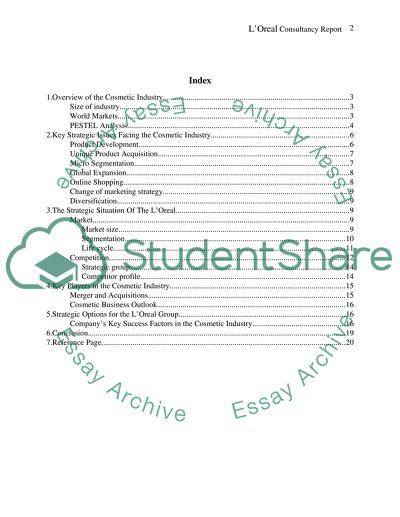Cite this document
(“LOreal Consultancy Report Essay Example | Topics and Well Written Essays - 2500 words”, n.d.)
LOreal Consultancy Report Essay Example | Topics and Well Written Essays - 2500 words. Retrieved from https://studentshare.org/miscellaneous/1507301-loreal-consultancy-report
LOreal Consultancy Report Essay Example | Topics and Well Written Essays - 2500 words. Retrieved from https://studentshare.org/miscellaneous/1507301-loreal-consultancy-report
(LOreal Consultancy Report Essay Example | Topics and Well Written Essays - 2500 Words)
LOreal Consultancy Report Essay Example | Topics and Well Written Essays - 2500 Words. https://studentshare.org/miscellaneous/1507301-loreal-consultancy-report.
LOreal Consultancy Report Essay Example | Topics and Well Written Essays - 2500 Words. https://studentshare.org/miscellaneous/1507301-loreal-consultancy-report.
“LOreal Consultancy Report Essay Example | Topics and Well Written Essays - 2500 Words”, n.d. https://studentshare.org/miscellaneous/1507301-loreal-consultancy-report.


